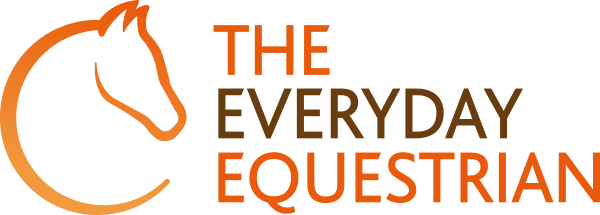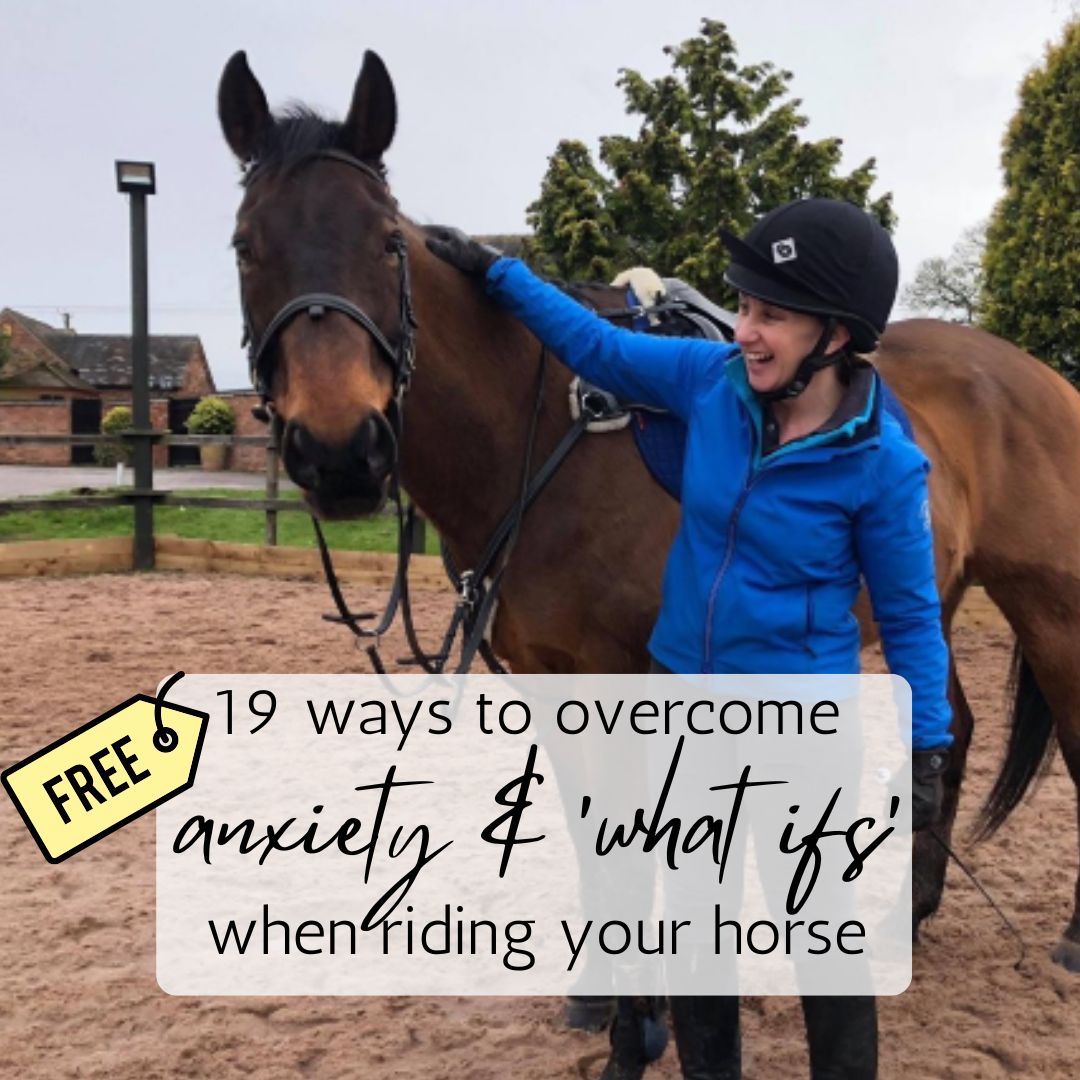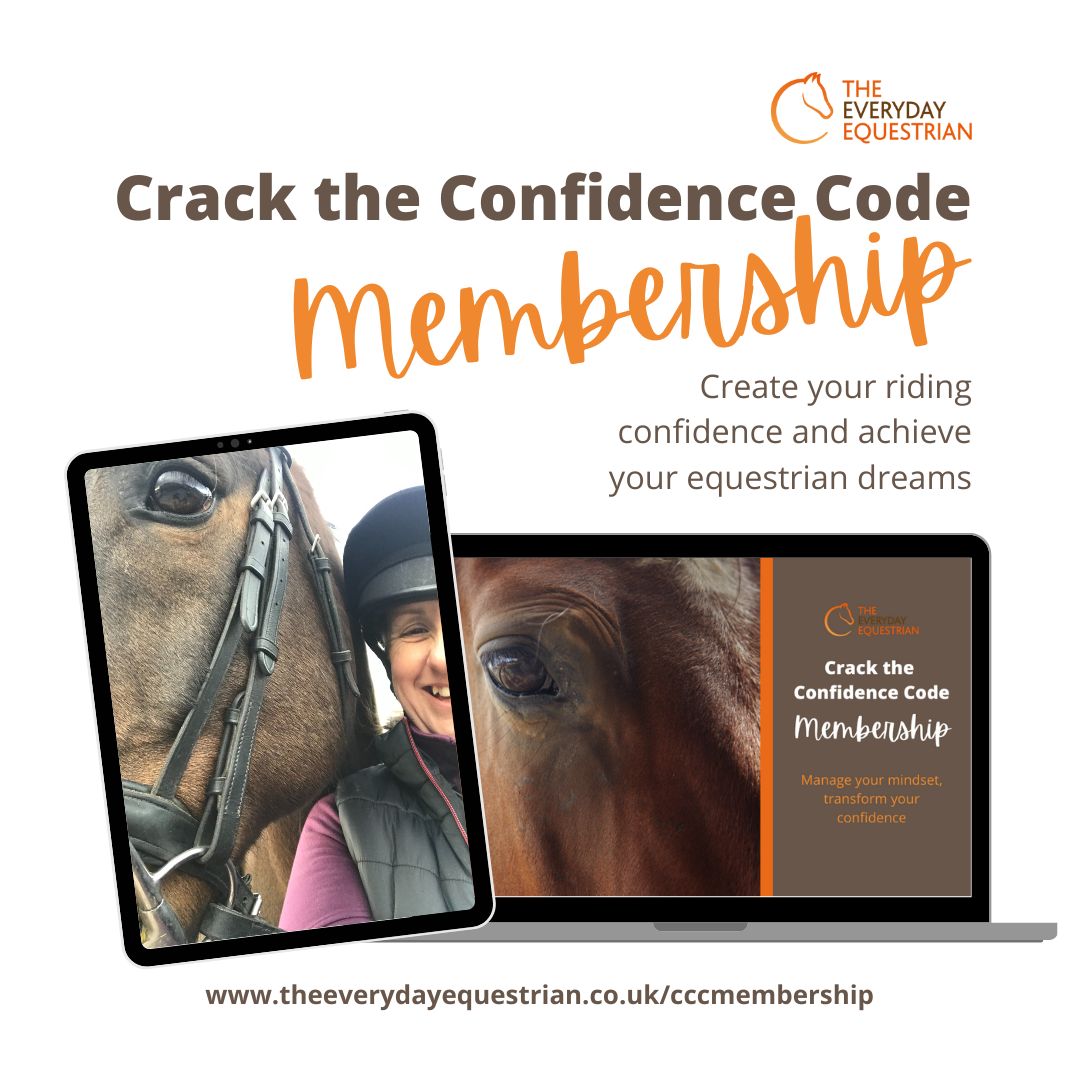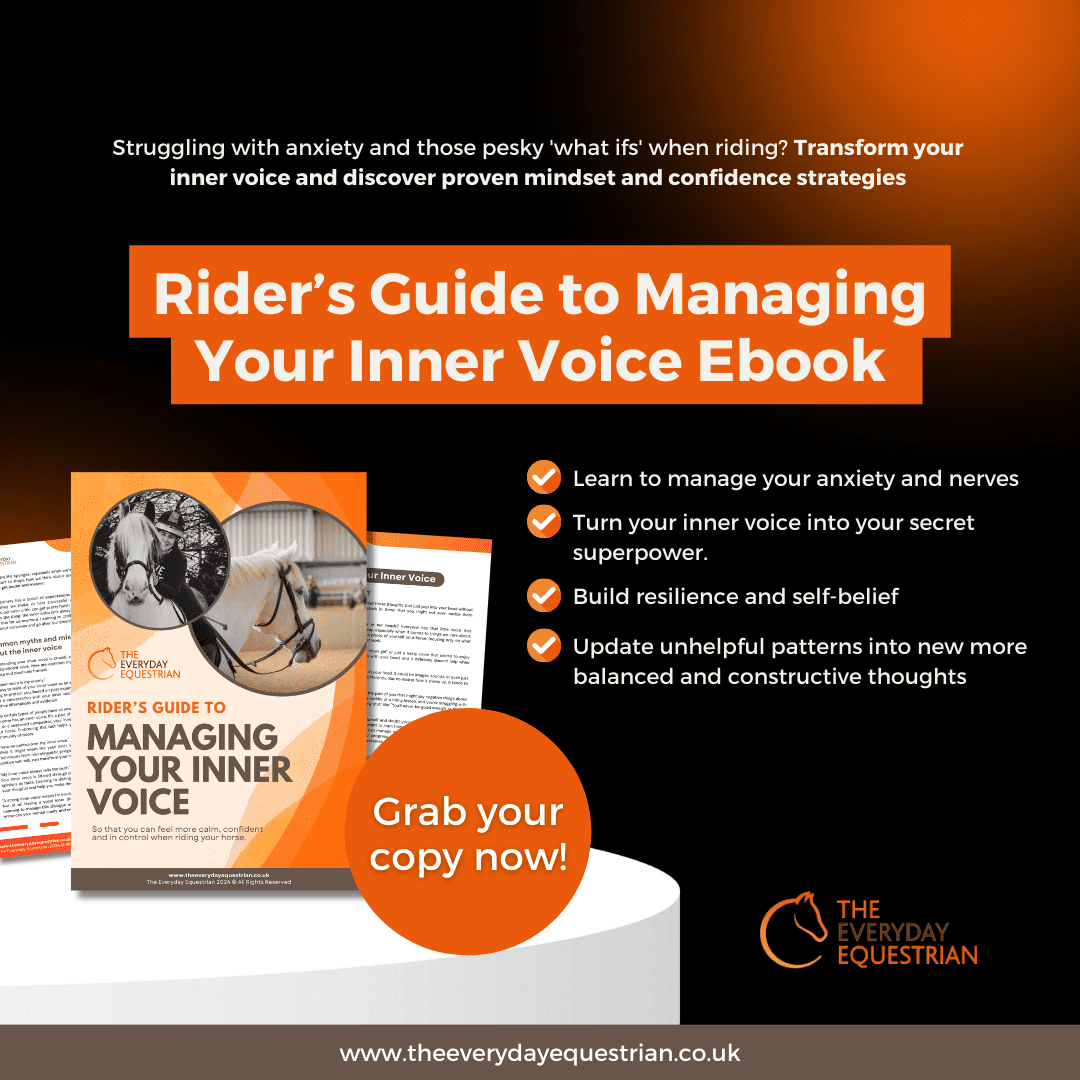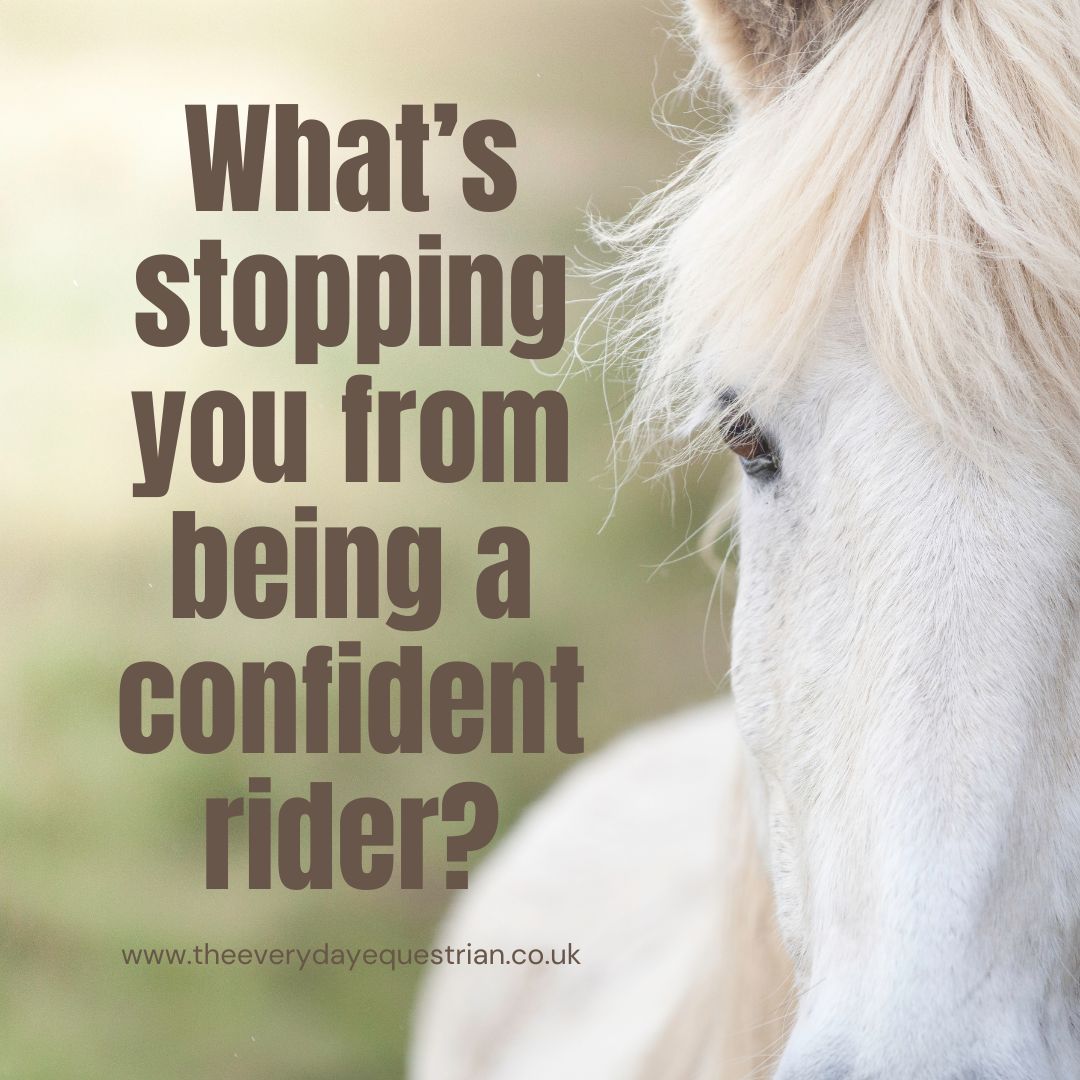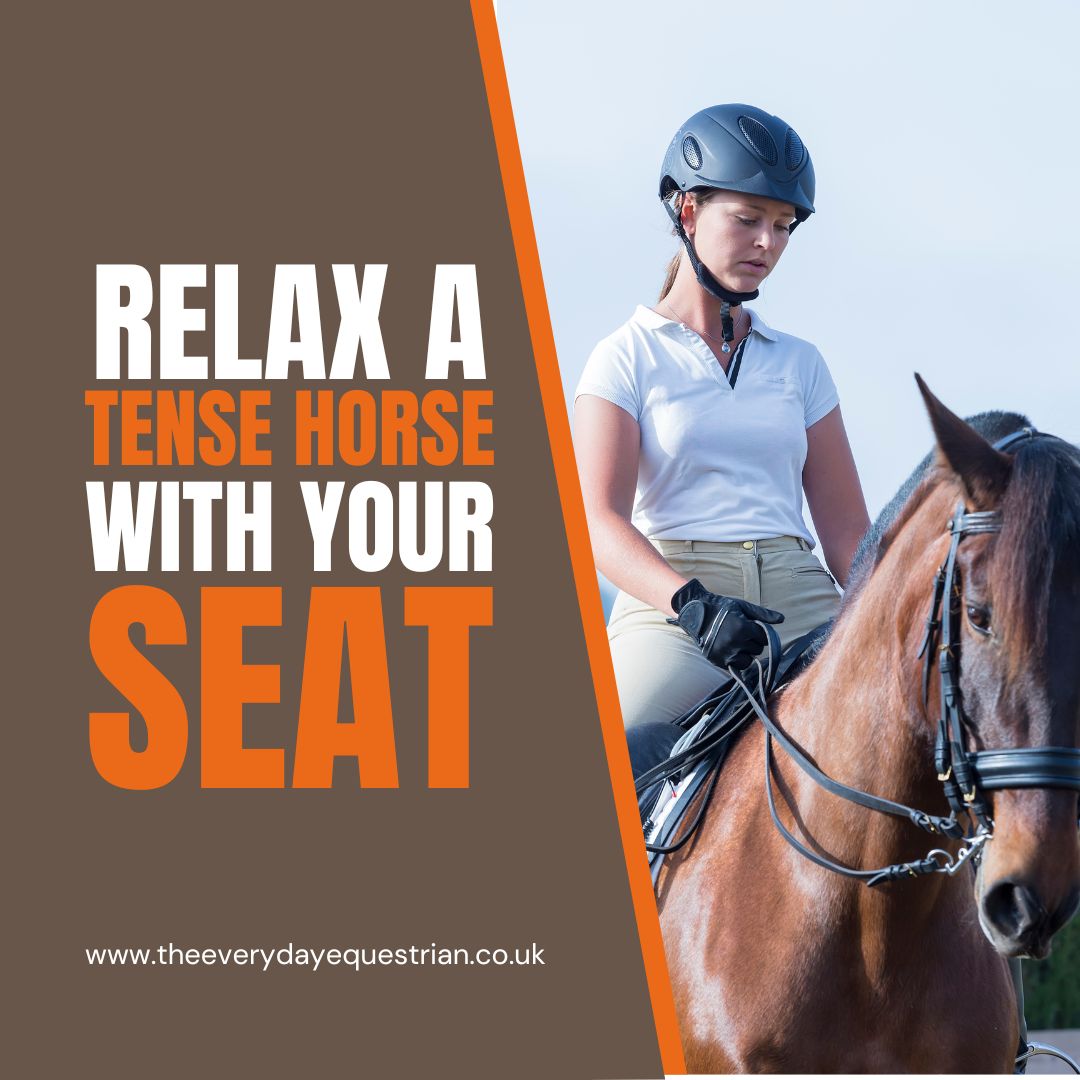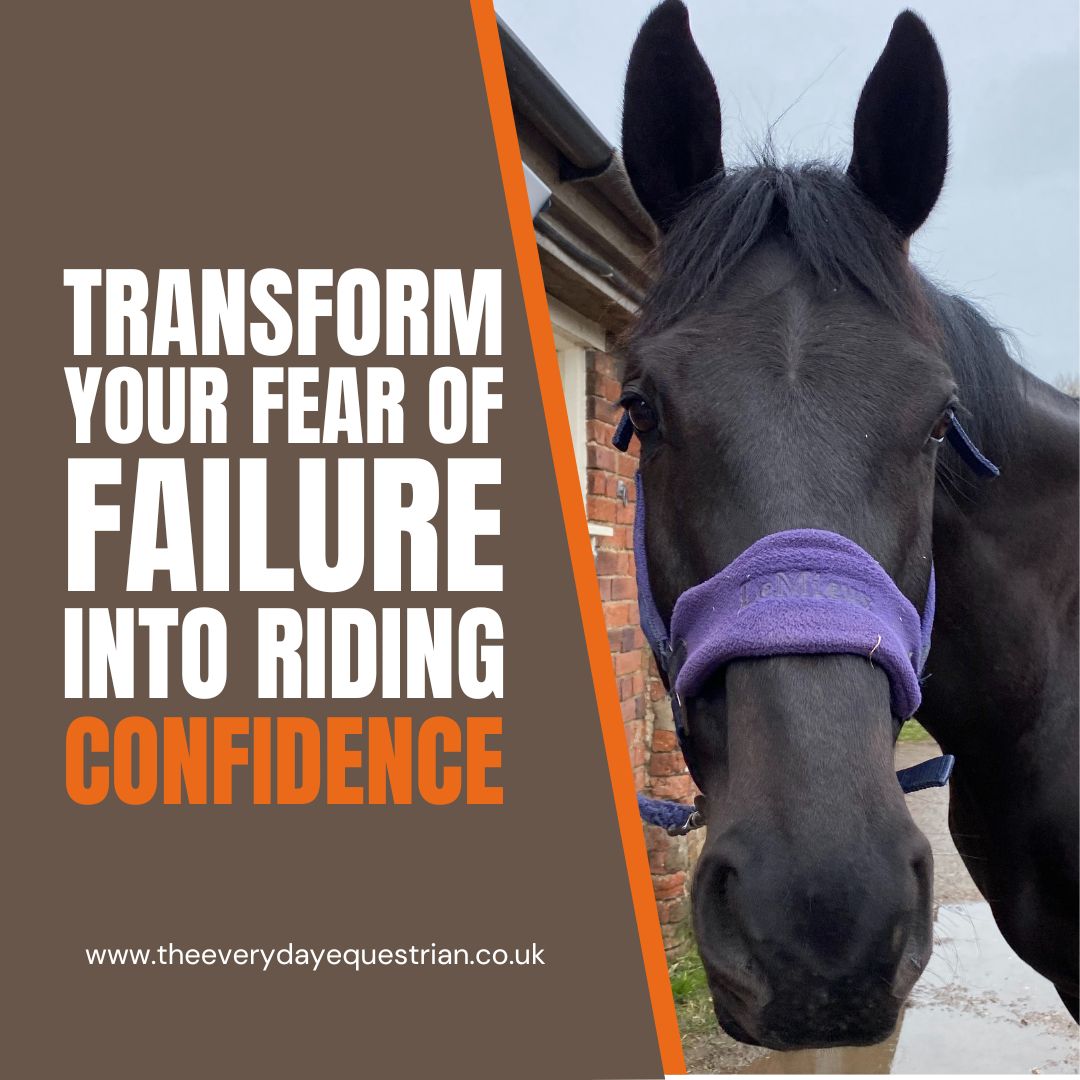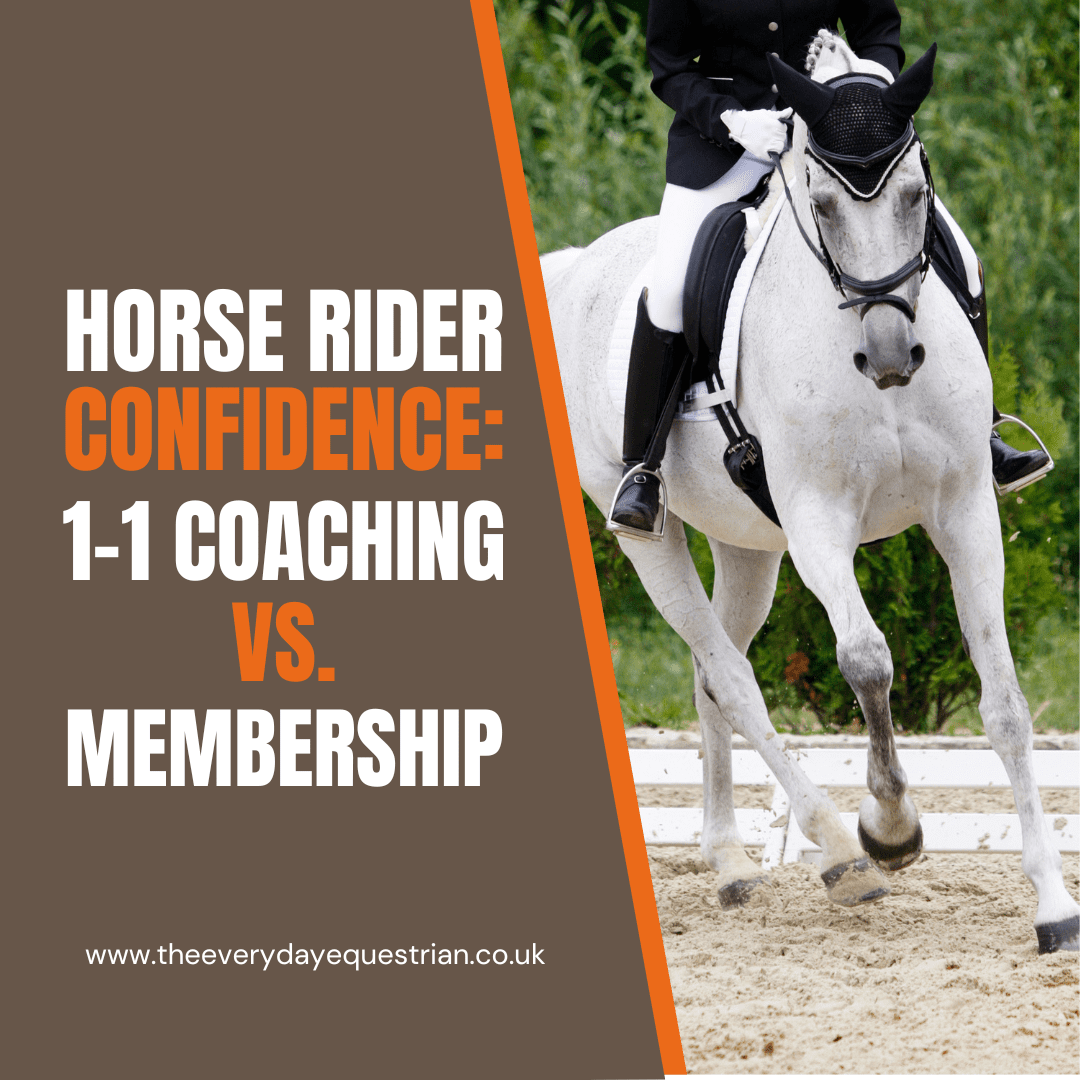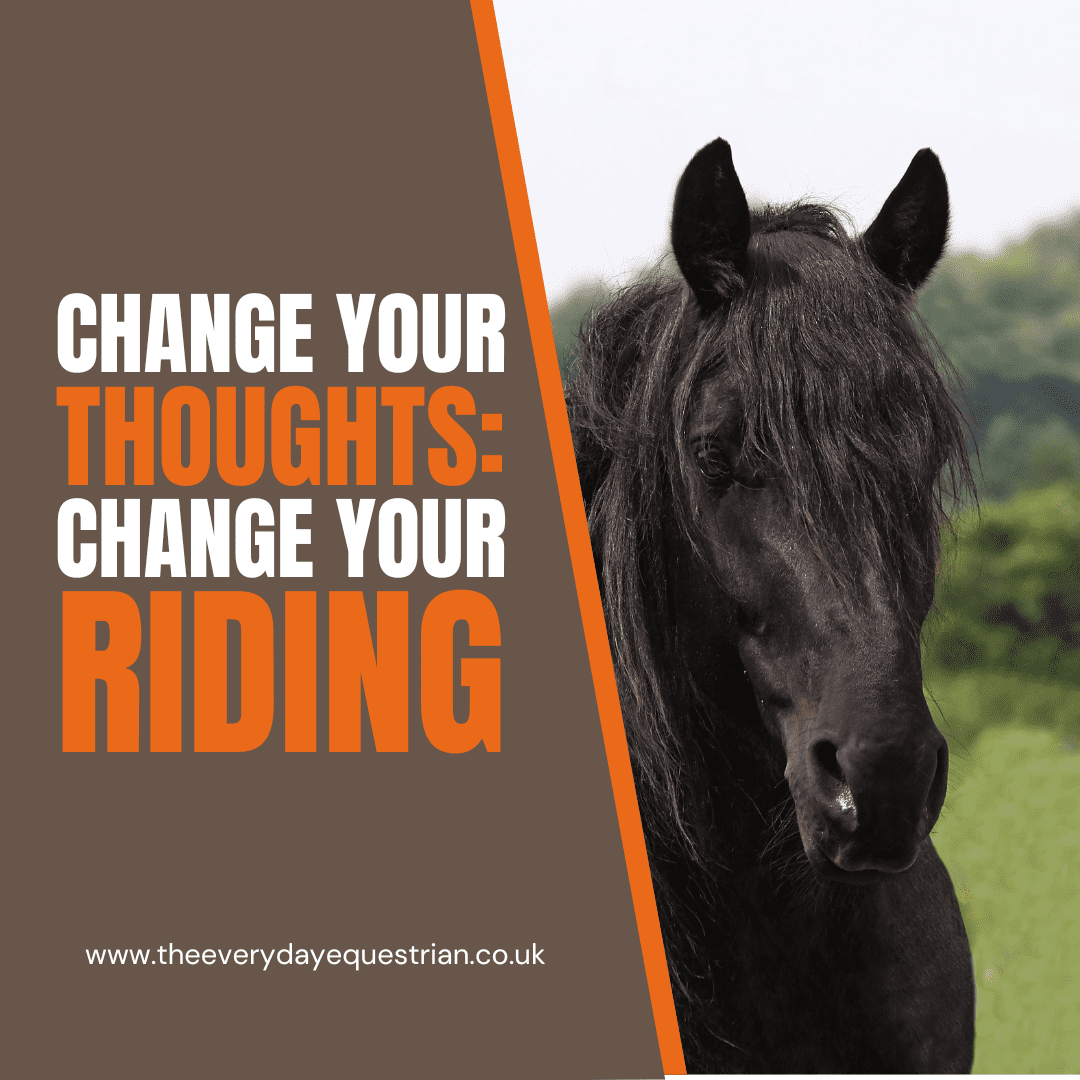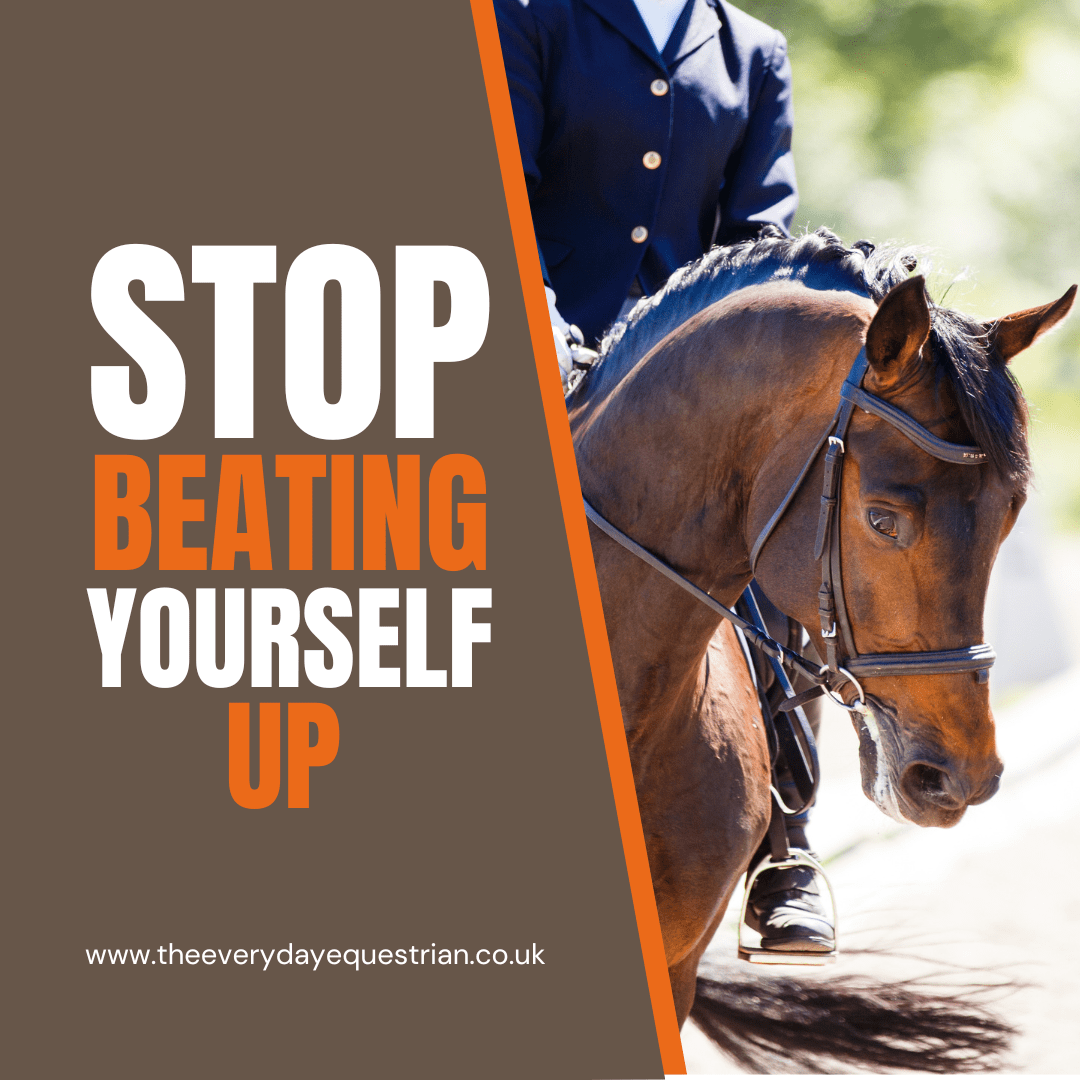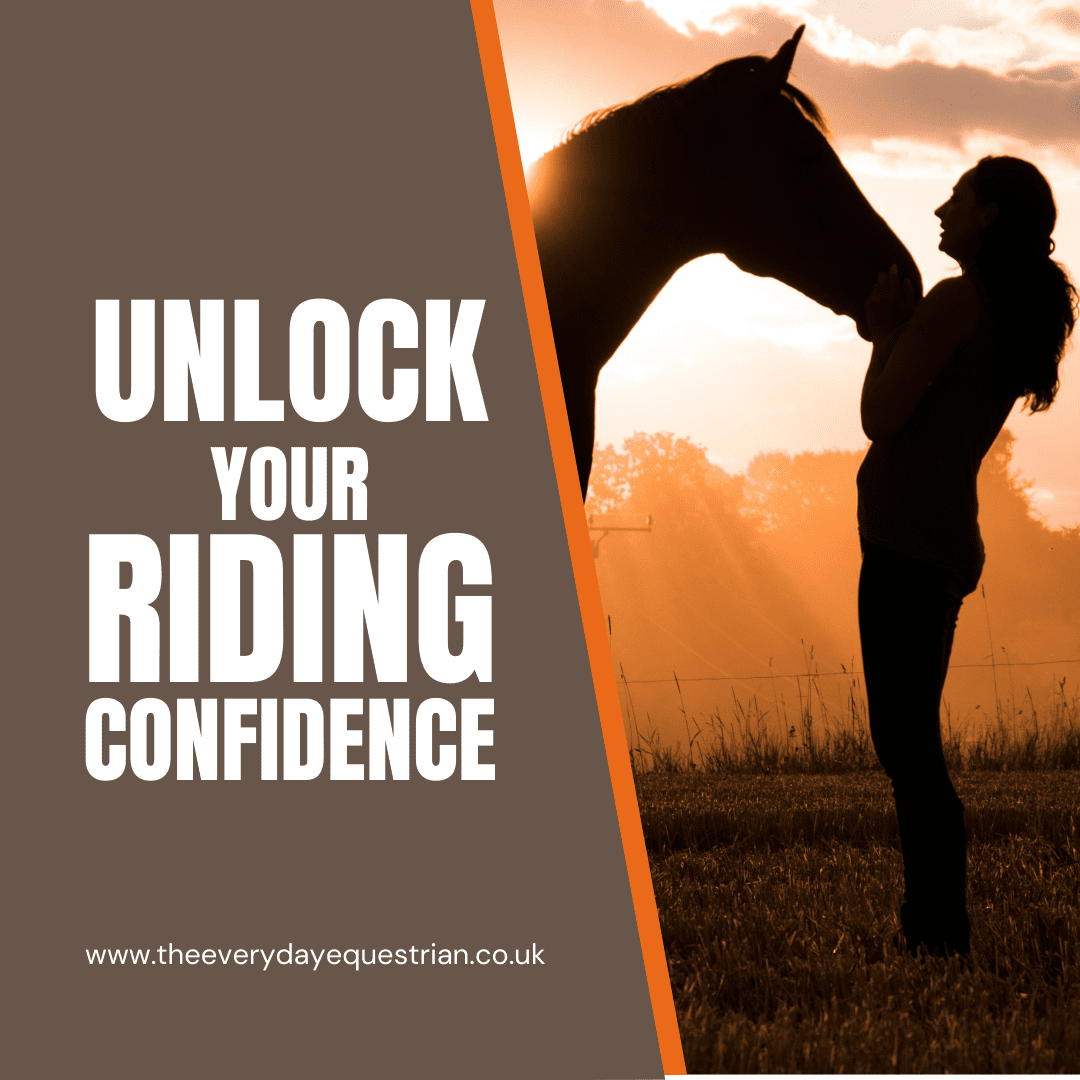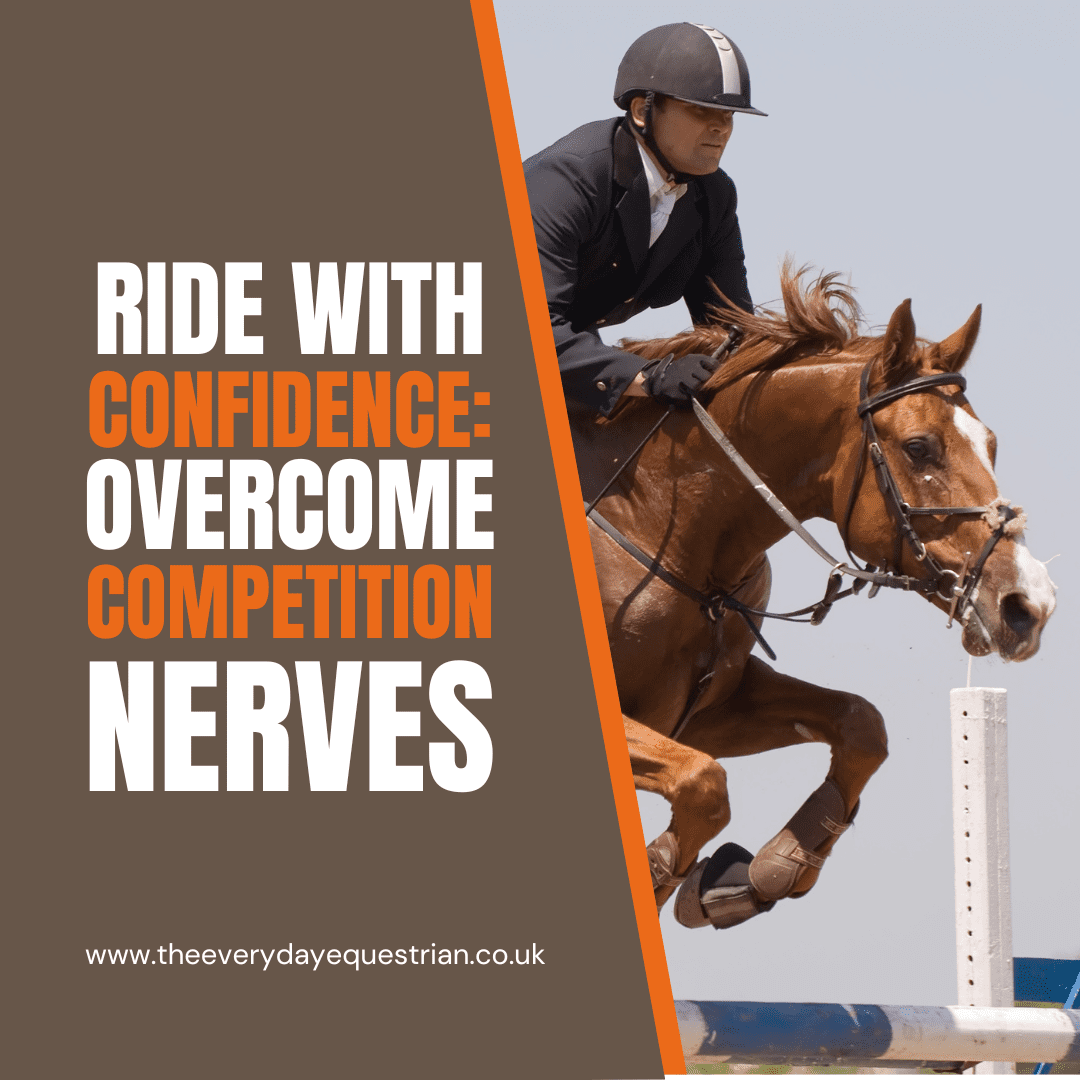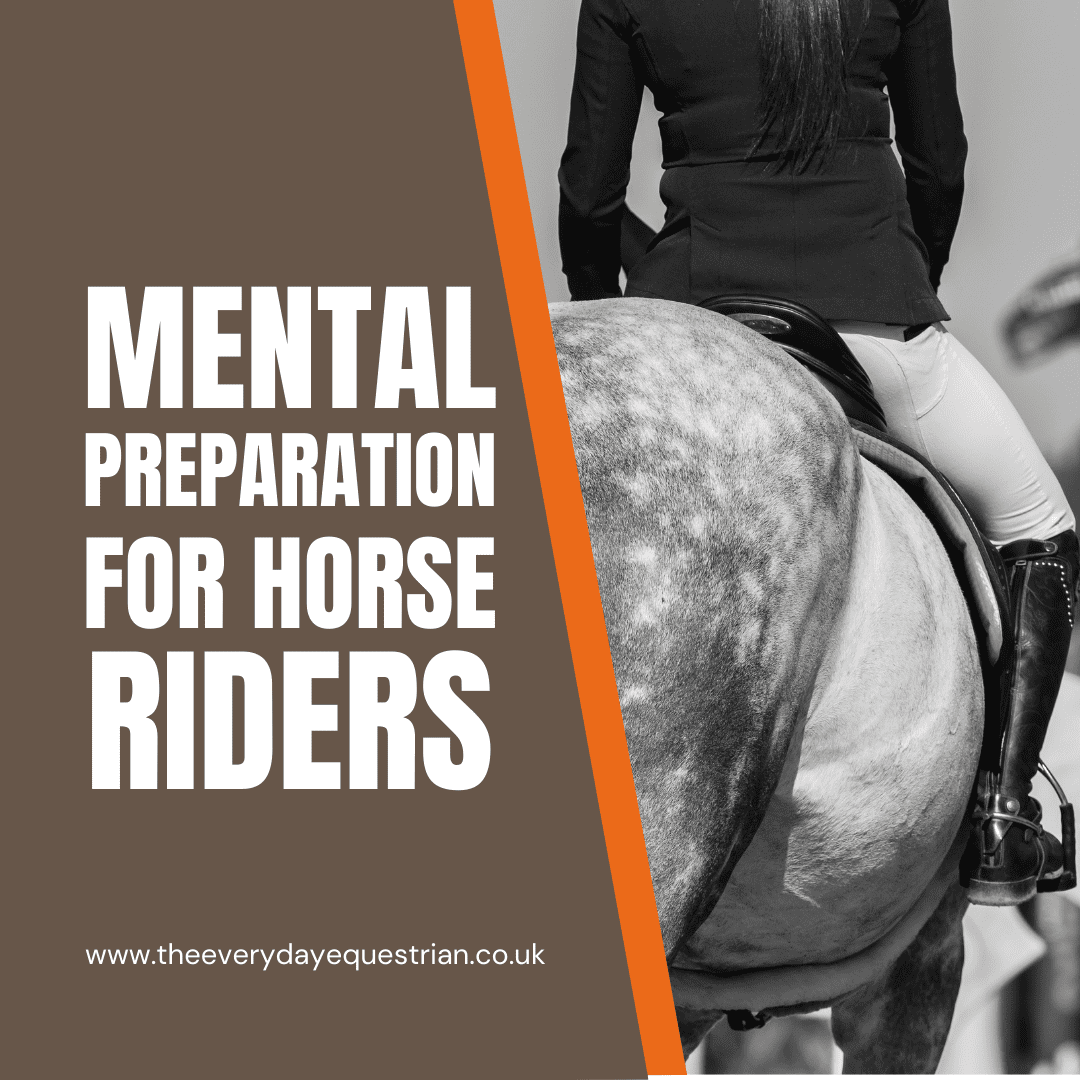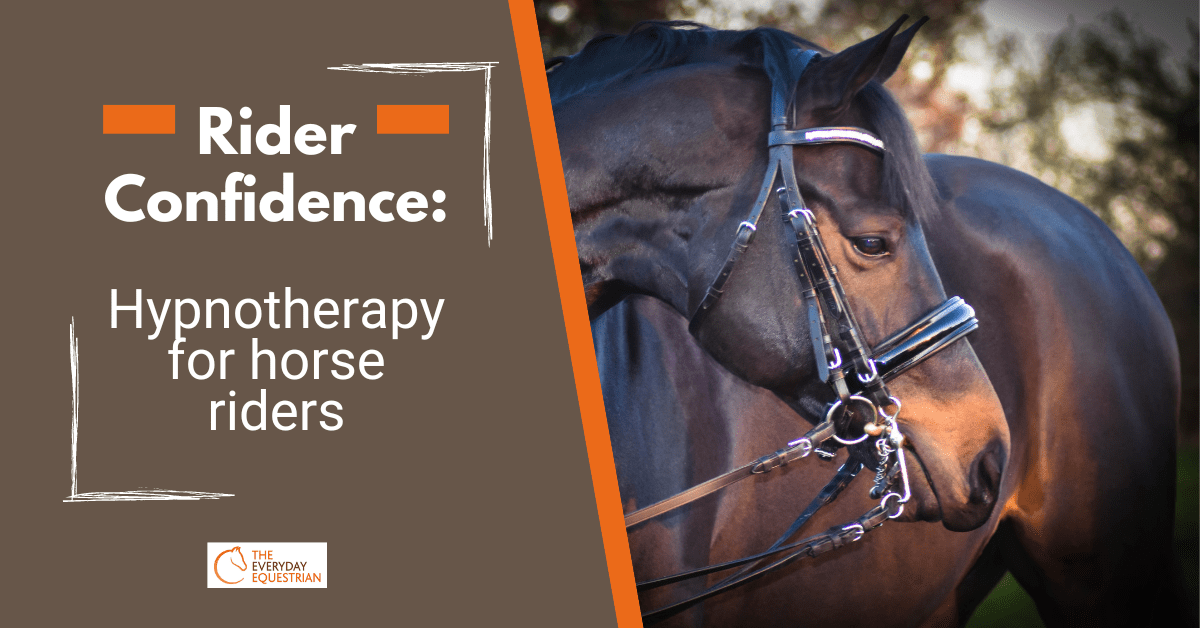Understanding how we process sensory information can significantly influence how we experience nerves, anxiety, and fear when riding our horse. We use our ‘internal representational systems’, which refer to the primary ways we perceive and internalise our experiences through our senses, to make provide information about our experiences. Our mind filters and uses this information to make meaning of our subjective experience, as a point of reference for the future.
Our internal representational systems are visual (seeing), auditory (hearing), kinesthetic (feeling), gustatory (tasting), and olfactory (smelling). The processed information from each of these senses will impact how your unconscious mind processes your world and have an impact on how you feel about yourself, your horse and riding.
Visual (Seeing)
If you tend to think in pictures, you might visualise potential problems while riding, like imagining a fall or picturing the horse becoming spooked. These vivid mental images can make you feel more anxious. To manage this, you can refocus your mind on visualising exactly what you actually want to happen, in as much detail as you can. Your mind really doesn’t know the difference between what’s real and what’s imagined, and will respond to precisely what you tell it! So using this to your advantage and use your brilliant imagination to create a visualised scenario where things happen exactly as you want them to, and where you manage any surprises with ease and confidence.
Auditory (Hearing)
If you’re sensitive to sounds, the external noise of the horse’s hooves, your horse’s breathing, or sounds from the environment will all add to how you experience riding your horse. Internal sounds, such as your self-talk are also an important factor, since we often don’t realise quite how we speak to ourselves in our mind! Listening to calming music (where it’s safe to do so, obviously!), and positively managing your self-talk before and during your ride will help boost your confidence.
Kinaesthetic (Feeling)
If you are someone who is highly attuned to your feelings and emotions, you might be acutely aware of every physical sensation in your body and how it makes you feel. You might be aware of a knot in your stomach, tightness in your throat, or a very real feeling of having your legs turn to jelly! These type of physical sensations quickly transmit an alert to your mind, triggering nerves, anxiety and even fear. Practising deep breathing or other relaxation techniques can help you manage these physical sensations and reduce your anxiety.
Gustatory (Tasting)
As riders, the sense of taste is one we don’t often think about, and it’s closely tied to memory, where certain flavours can trigger emotional responses. I know of riders who chew minty gum before they ride (never chew gum while riding, as it is a choking hazard), and that minty sensation on their tongue can anchor feelings of readiness and confidence. Being mindful of what you eat or drink before riding and choosing flavours that you find comforting or refreshing can help trigger a shift in how you feel.
Olfactory (Smelling)
Certain smells can evoke powerful emotional responses. I don’t know about you, but I love the slightly warm, sweaty smell of horses who have just worked (that sounds weird, doesn’t it?!). As a child, I dreamed of the smell horses, of leather tack, and even now the first fly spray of the summer brings a reminiscence of happy hacking days. Find those smells which make you feel good and remind you of happy times, then make use of these whenever you can.
Recognising which of these sensory inputs resonates with you most will provide you with simple tools to improve your riding confidence. By consciously adjusting how you seek out and use these sensory inputs, you can help yourself feel more in control and less anxious while riding.
Preferences
While each of us might have a preference for one or more internal representational systems, such as visual, auditory, or kinesthetic, it’s important to note that we don’t exclusively use just one; our mind gathers and uses information from all of them. Think of it like having a favourite tool in a toolbox; even though you might prefer one tool, you still use the others when the situation requires it.
For instance, even if you primarily process your experience in a primarily visual way by imagining scenarios and pictures in your mind, your mind will still also pay attention to what you hear, the physical sensations you feel, the tastes and smells that surround you. Each sense provides a different piece of the puzzle, contributing to a fuller understanding and experience of your environment.
This means when you’re riding your horse and trying to manage anxiety, even though you might focus on using your preferred sensory channel, such as visualising calm and successful rides, you’ll also benefit from tuning into the sounds that calm you, the feel of the horse beneath you, and even calming scents or flavours. Using a combination of all your senses can help create a richer, more grounded experience that can be more effective in managing your nerves.
Simple Tips
Visual
Focus on shifting your mindset by vividly imagining positive outcomes. Instead of letting your mind linger on potential challenges, picture yourself riding smoothly, handling challenges with ease, and finishing your ride successfully. This practice of visualisation can help build your confidence and reassurance.
Auditory
Integrate calming sounds into your daily routine to help soothe your nerves. This could be as simple as listening to the radio while you tack up, or repeating positive affirmations to yourself such as “I am calm and in control” or “I trust my abilities and my horse.” These auditory cues can help create a mental environment of calmness and positivity.
Kinesthetic
Use physical relaxation techniques to reduce anxiety and physical tension. Before riding, try doing some gentle stretches, deep breathing exercises, or progressive muscle relaxation—where you tense and then relax different muscle groups. This not only relaxes your body but also prepares your mind for a more comfortable and focused ride.
Gustatory
Choose flavours that evoke a sense of calm and enjoyment for you. This might mean having a peppermint or a piece of dark chocolate before you ride or sipping herbal tea like chamomile which is known for its soothing properties. These tastes can trigger positive sensory memories and help calm your nerves.
Olfactory
Introduce a comforting and familiar scent into your riding environment. This could be applying a dab of lavender oil on your wrist or adding a few drops of tea tree oil to your riding gear. The smell of chamomile can also be soothing. These scents can significantly enhance your emotional state by triggering positive associations and reducing stress, creating a more relaxing atmosphere for both you and your horse.
By actively engaging these sensory strategies, you can better manage your emotions and enhance your overall riding experience. Each tip is designed to help you focus, relax, and enjoy your time with your horse, making your rides more pleasant and successful.
In conclusion, understanding how your internal representational systems influence your emotions can help you manage your nerves and anxieyt around riding. By recognising your preferred internal representational systems, you can use different strategies to feel calmer and more in control, so you can become a more confident rider.
What a month November turned out to be! Busy doesn’t even come close to describing it all, what with teaching all hours God sends, alongside heading out for a whole heap of professional development events, I can safely say that I don’t think I’ve ever worked as hard as this month! It has been brilliant though, from catching up with regular clients, to meeting new ones, to running fully booked clinics, to making plans for the future; I’m very very lucky to be able to work with such great horses & clients.
I had initially planned to write loads of blogs about each event I went to, but clearly that never happened… so I just thought that I’d get the highlights down ‘on paper’ here as a kind of recap. I absolutely love learning & keeping up-to-date with industry developments and best practice, so I’ve been on a real mission to get involved with as much as I can.
From 4 years to 4* – Lecture demo evening with Ros Canter & Caroline Moore @ Vale View Equestrian Centre, Leicestershire
Oh my goodness, I learned so much from this lecture demo, both Caroline and Ros were awesome. They demonstrated their training methods with a range of young horses, and showed both how to ride correctly and effectively over a selection of jumping questions. Caroline spoke really clearly about her training ethos and what she is looking for, as a coach through each exercise, while Ros eloquently described what she was feeling and doing as a rider.
Super inspiring event 🙂
BHS Stage 4 Teach
So I’ve started training towards the BHS Stage 4 Teach exam, which is exciting & terrifying in equal quantities! I need to feel like I’m continually learning & challenging myself to improve my coaching, and indeed the learning & progress of my clients, so I’ve bitten the bullet & booked my exam.
It’s been a long time since I’ve done a BHS exam, about 5 years I think as I got distracted by competing, but I definitely want to improve what I do & learn from other coaches. This is a great opportunity to get some professional feedback on my coaching and some constructive criticism for developing my skills, with the ultimate goal of delivering better value to my clients & their horses. It’s certainly not easy to be watched & judged when you’re teaching, but it’s the only way to improve & make progress. I’ve got quite a few training sessions planned, so watch this space!
I was really disappointed to miss out on going to the British Dressage National Convention in November; I had booked tickets early & planned to have a lovely day out, but unfortunately I had managed to get myself to the point of complete exhaustion by that Saturday, and the thought of driving an hour and a half down to Hartpury just felt impossible (and probably not terribly safe). Instead, I had a lovely duvet day at home with my little girl, and basically came to a great big fat stop. It was the right thing to do, but I still wish that I could have made it there. Next year…
Event Physio – Creating rider symmetry to improve performance; the coach’s role @ Flawborough Equine, Nottinghamshire
Presented by Andy Thomas, who is currently the High Performance Human Science and Sports Medicine Advisor to the US Equestrian Team, and who has previously worked closely with the British Equestrian Federation, this was a hugely interesting day. It focussed around discussion of rider asymmetries an imbalances, functional anatomy & biomechanics, along with practical rider assessments both on and off the horse. Further we explored the role of the coach in identifying & managing imbalances, together with a range of practical exercises to improve rider posture.
It was fascinating to be involved with discussions around the approach of elite riders and how their experiences can translate to use mere mortals. Basically, physios & scientists see the same physical issues in both elite and grassroots riders; the difference being that elite riders generally take professional advice & guidance to fix the issues since they have a direct impact on performance, while grassroots riders focus almost entirely on their horse over themselves!
The biggest learning point of the day was that the majority of rider problems & asymmetries can be corrected by fixing imbalances & weaknesses in the pelvis. The key to a truly independent seat is improving control of the rider’s pelvis, hips & core.
There are a wide variety of on- and off-horse exercises which will improve the rider’s balance & symmetry:
- Riding without stirrups
- Riding on the lunge
- Franklin balls
- Resistance bands
- Correct warm of before riding (for the rider!)
- Pilates and/or yoga
- Observation of the rider’s movement when dismounted
- Video analysis
Many rider imbalances present as problems in opposite sides of the body in a common pattern, for example many riders are weak in their stabilising muscles around the right hip, whilst being excessively tight in the muscles around the left hip.
This was a brilliant day, from a true expert in their specialist field.
Brightwells Elite Performance Horse Sale @ Addington Equestrian Centre, Buckinghamshire
Last weekend, I went to the elite sports horse sales at Addington, and it was fab! I haven’t been to anything like it before, but we saw some amazing young horses and were in awe that people were actually in a position to spend £34k on a 3-year-old! It was lovely to see how well the horses had been produced; we went to look round the stables and all the horses were calm, happy and well-mannered. I would definitely think about buying a youngster from these sales; not all the horses were sold, nor did they all fetch really high prices, however they all came with a full set of X-rays, evidence of two 5* vettings over the previous two weeks, and had been started their ridden careers correctly.
It was great fun to watch the sale happening, but also to see the time & effort put into preparing the youngsters for the event. It’s definitely worth going to watch, if you get the chance.
British Dressage North-West Region – Coaches Evening @ Ashbrook Equine Hospital, Knutsford
What a brilliant evening this was! It was quite a trek across to Knutsford as I had to take the back roads since the M6 was closed, but it was totally worth making the effort to go. Delivered by Prof. Moira Lafferty and UKCC L4 BD Coach Janet Horswill, the session was designed to consider how coaches can best manage parents and children in a coaching environment, but it offered so much more. The evening was a great opportunity to share ideas, discuss issues and to brainstorm potential solutions.
The two main quotes of the evening for me were “Everyone can be excellent at their level” which really resonates with me on a personal level, and for my clients. Secondly “Tiny, tickable, attainable targets”, which rings true for so much in life, but especially for working with horses!
Anyway, enough of my madness… I’m looking forward to the next few weeks of December and the run up to Christmas (not that I’ve even started shopping for presents yet), but also to catching up with friends & family that I have neglected over the year. I know I’m incredibly lucky to have the support of my hubby and little girl, who put up with my obsession with horses in all its forms, plus some very very good friends who help with my horses when I can’t make it to the yard. It’s sometimes not easy to try & balance everything, and I really couldn’t do it without them.
Merry Christmas everyone, and here’s to making big, scary, exciting plans for 2019!
